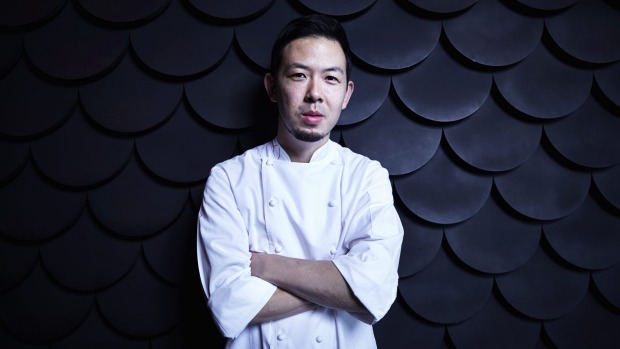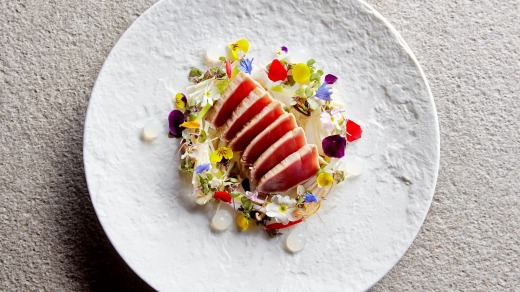
San Francisco-born and raised Japanese cuisine specialist Chase Kojima led kitchens in Las Vegas, London, Los Angeles and Dubai for the iconic Nobu restaurant group before opening Sokyo in Sydney in 2011 and Kiyomi on the Gold Coast this year. See star.com.au/sokyo, jupitersgoldcoast.com.au.
I love master sushi chef Koji Sawada's Sushi Sawada restaurant in Ginza. He specialises in perfectly aged fish and unique sushi rice and has two Michelin stars. Sawada has only six seats and no photos are allowed. His omakase menu comes with an amazing 27 courses, which are all so very delicious that you just have to go and try for yourself. No website: 5-9-19 Ginza, MC Building 3F, Chuo 104-0061, Tokyo Prefecture; +81 3 3571 4711.
I've spent the last year leaning as much as I possibly can about fresh produce. One of my most exciting recent discoveries is the "dragon fish" at the Tsukiji Fish Market in Chuo, Japan. It's a three-kilo live freshwater eel – an absolute beast! It's extra fatty, so I like to cook it on binchotan charcoal until it's nice and smoky. It's best to try when in season during Japanese summer at Koju behind the Nikko Hotel in Ginza, or Seiji Yamamoto's RyuGin in Ginza. See nihonryori-ryugin.com/ja/.

There are so, so many hidden gems in Tokyo. My favourite is Ryotei Kappo Kaiseki in Kagurazaka, Tokyo. It's a small kappo restaurant that serves old school, traditional Japanese degustation. They aren't interested in the Michelin Guide and maintain a strict policy of "Ichigen sama okotowari", which means they politely decline first time customers unless they are introduced by a regular customer. I also love Komuro restaurant in Shinjuku-ku, Tokyo, which originally refused to accept Michelin awards, but they now have two stars. Again, it's very hard to get a reservation without a local guest, but it's worth trying. Komuro; Kanai building. 1F 13 Wakamiya-machi, Shinjuku-ku, Tokyo, +81 3 3235 3332.
Day off or not, I love to go shopping and eating. I always start out in Ginza in the early morning where I grab some sushi and go shopping, then I take a taxi to the Tsukiji Fish Market. From there I take a train to Kappabashi (or "Kitchen Town"), which is like Toys "R" Us for chefs. Its five blocks of shops in Tokyo between Ueno and Asakusa that services the kitchen and restaurant trade. You can find anything you need to open a restaurant, from utensils to plastic display food.
Tokyo truly never sleeps and there are so many amazing restaurant options. I love riding a bicycle home and stopping by at least four different convenient stores to pick up quick bites along the way.
When exploring the Tsukiji Fish Market it's easy to make the assumption that all the restaurants will be serving the freshest seafood because the catch of the day is right there. But unfortunately, some of the restaurants import cheap, poor-quality frozen seafood. If the restaurant isn't busy, it's probably best to give it a miss.